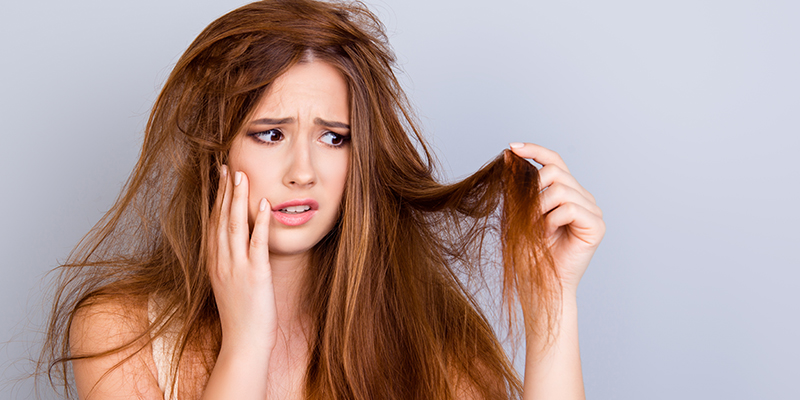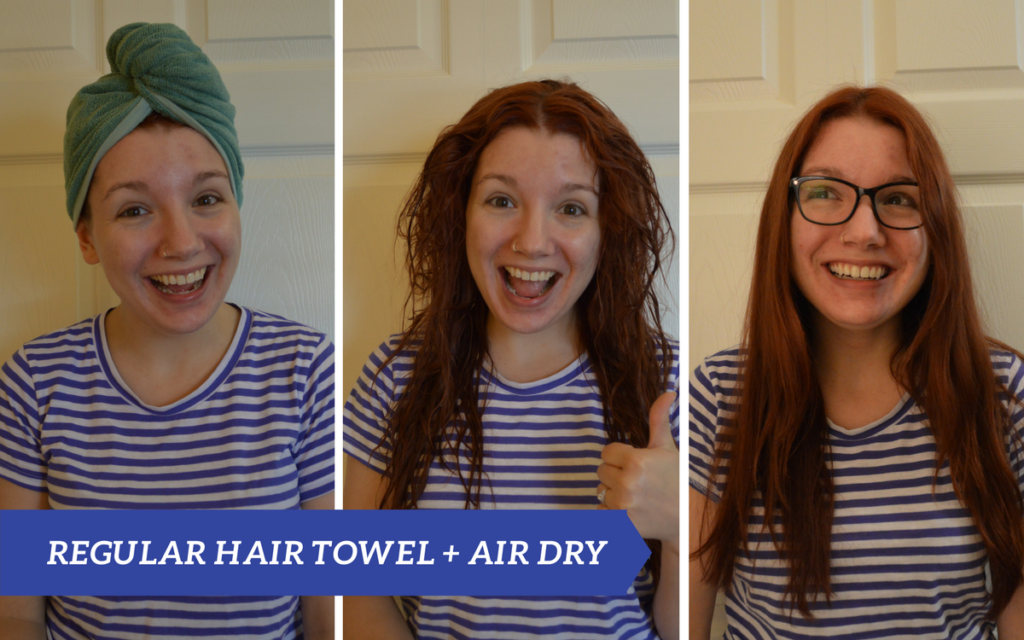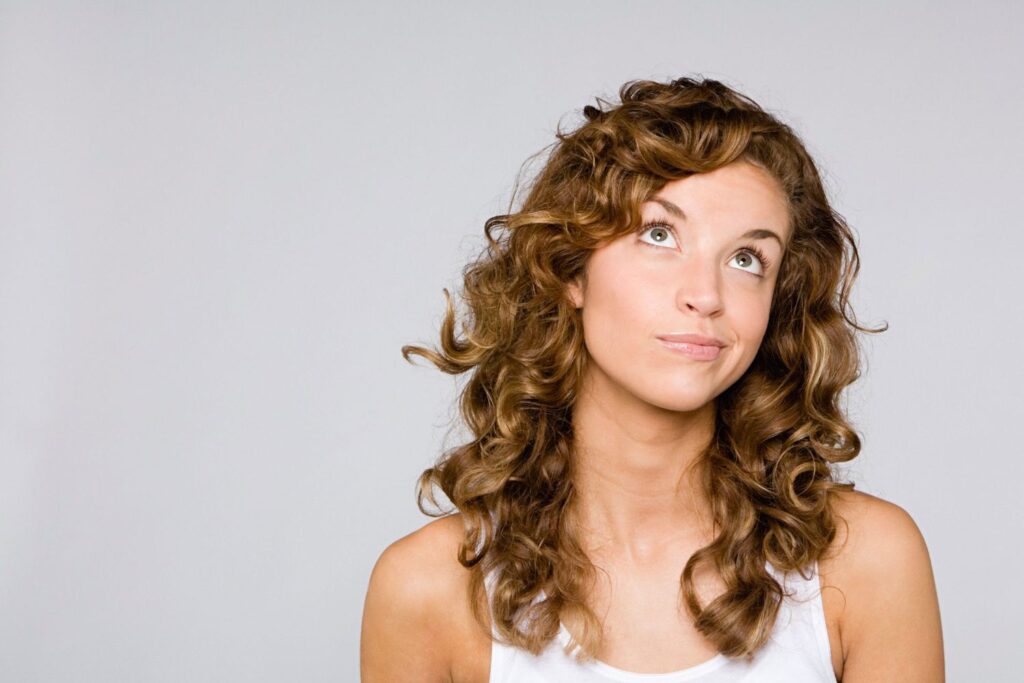Although frequently utilized to dry hair, is a towel bad for hair? Concerns arise when ordinary bath towels are applied to damp hair. Many people are not aware of the hazards of rubbing towels in their hair. This topic will definitely give a clear idea of whether towel use on hair is good or bad.
Table of Contents

There are several justifications for considering towel bad for hair:
Friction and Damage
When used on damp hair, bath towels, particularly those with a coarse texture, can cause friction and damage. Because wet hair is more prone to damage, the friction the cloth causes can lead to an increase in split ends, breakage, and tangling.
Absorbency Concerns
Variations in towel absorbency may result in protracted drying periods. An attempt to remove excess water by vigorously rubbing damp hair with a towel may result in damage and ineffective absorption.
The integrity of hair cuticles
may be compromised when they are damp, and the utilization of abrasive towels can cause disruption to these cuticles. Over time, this may cause the hair to become coarse and dull-looking.
Curly Hair Concerns
Individuals with curly hair may discover that ordinary towels contribute to the formation of curls. Friction and a coarse texture may disrupt the natural curl pattern.
Should I dry my hair with a towel or air-dry?
Depending on your hair kind, taste, and state, you can decide whether to towel-dry or air-dry your hair. The following factors apply to both approaches:

Using a Towel to Dry:
Efficiency
Compared to air drying, towels dry more quickly because of their rapid water absorption capacity.
Friction
When using a towel, employ delicate pressure; too much pressure can lead to friction and even harm wet hair. Use the towel to pat or blot your hair instead.
Hair Type
Because towel drying aids in controlling and style, it may be beneficial for people with straight or slightly curly hair.
Volume
For those who prefer it, towel drying can help add volume to the hair.
Air-dry hair:
Gentleness
Since air drying lowers the chance of heat and friction damage, it is generally kinder to hair.
Natural Texture
Air drying your hair preserves its natural texture, which is especially advantageous for people with curly hair because it keeps the curl pattern in place.
Decreased Heat Exposure
By removing the need for heat styling products, air drying helps protect hair from heat damage.
Less Frizz
Air drying your hair as opposed to towel drying can cause less frizz for those whose hair is prone to it.
The ideal technique ultimately depends on your lifestyle, hair type, and personal preferences. You may also think about combining the two approaches. For instance, letting your hair air dry after gently towel-drying it to eliminate extra water can be a smart compromise.
To avoid problems like mildew or mold growth, if you decide to air-dry your hair, make sure you give it enough time to dry completely before styling or going to bed. Additionally, detangling your hair with your fingers or a wide-tooth comb as it air-dries can help reduce breaking.
Try out both techniques to see which suits you the best, keeping in mind the particular requirements of your hair type and styling regimen.
What is the healthiest way to dry your hair?
The best method for drying your hair relies on a number of variables, such as the type, texture, and preferences of the individual.

Here are some pointers for a wholesome blow-drying regimen:
Utilizing a soft towel, pat, or blot:
Rather than scrubbing your hair with a towel, gently pat or blot excess water with a soft, microfiber towel or an old T-shirt. This lessens the chance of injury and minimizes friction.
Naturally Air-Dry:
One of the healthiest techniques is letting your hair air dry since it reduces heat and friction exposure. If at all possible, avoid using any heat-styling appliances and allow your hair to dry naturally.
Use Your Fingers or a Wide-Tooth Comb:
Gently untangle damp hair with your fingers or a wide-tooth comb. To minimize breaking, start at the ends and work your way up. Steer clear of fine-tooth combs, especially when your hair is damp and more prone to breakage.
Put on a heat shield.
Before using a hair dryer or other heat-styling products, give your hair a quick spray or serum application of heat protectant. This lessens the harm that heat exposure causes.
Make use of low heat.
Make sure to use the low or medium heat setting on your hair dryer. Excessive heat can harm your hair and deplete it of its natural oils. To lessen exposure to direct heat, hold the dryer at an angle.
Purchase a Good Hair Dryer:
Think about utilizing a high-end hair dryer equipped with functions like temperature and speed adjustments. Additionally, some dryers have features built in to reduce damage.
Limit the frequency of heat styling.
Reduce how often you use heat-styling tools. When at all feasible, let your hair air dry; only use heat styling on exceptional occasions. Your hair’s integrity and health are preserved in this way.
Guard Your Hair While You Sleep:
To avoid tangling and breaking, think about tying up or lightly braiding your long hair before bed. To lessen friction, you can also use a silk or satin pillowcase.
Deep Condition Often:
To maintain your hair healthy and hydrated, including deep conditioning treatments in your hair care regimen. By doing this, damage and dryness may be avoided.
Drink plenty of water and eat a balanced diet.
The foundation of healthy hair is within. Drink plenty of water to stay hydrated, and eat a healthy, balanced diet full of vitamins and minerals to promote the health of your hair.
Keep in mind that every person’s hair type is different, so you should customize your hair care regimen to meet your specific requirements. Observe how your hair reacts to various techniques and modify your regimen as necessary. Seeking guidance from a physician or professional stylist might offer tailored assistance if you have particular issues with your hair.
Why is my hair frizzy after air-drying?
Many things can contribute to frizz after air drying; being aware of these aspects can help you control and reduce frizz.

Following air drying, your hair may become frizzy for the following typical reasons:
Humidity
High humidity frequently causes frizz. Humidity in the air allows moisture from the surroundings to seep into the hair shaft, inflating the cuticle, or outer covering of the hair, and producing frizz. In hair types that are porous, this effect is more noticeable.
Porosity
The ability of your hair to absorb and hold onto moisture is referred to as porosity. Highly porous hair is more likely to absorb moisture from the air more readily, which can result in frizz. Humidity increases the likelihood of frizz in hair with excessive porosity.
Absence of Moisture
Frizz is more common in hair that is dry and dehydrated. Your hair’s cuticle may get rough and seem frizzy if it isn’t moisturized. Deep conditioning and the use of hydrating hair treatments can help fight dryness.
Product Residue
Product buildup in the hair can cause frizz. Using conditioners or styling products that leave a residue in your hair and interfere with its natural texture can make frizz worse. Make sure the items you’re using work for your type of hair, then give it a good rinse.
Damaged Cuticle
When chemical treatments, heat styling, and other hair-damaging factors compromise the integrity of the hair cuticle, frizz can result. Cuticle protection and repair can be achieved with frequent deep conditioning and a reduction in heat style.
Rough Towel Drying
Frizz and friction can result from using an ordinary bath towel to dry your hair and being rough while doing so. Use a gentle cloth, such as an old T-shirt or microfiber towel, to pat or gently squeeze out extra water from your hair.
Natural Hair Texture
Frizz is more likely to occur in some hair types, particularly in those with natural curls or waves. Frizz can be controlled by embracing your natural texture and utilizing products made especially for wavy or curly hair.
Environmental variables
Pollution and exposure to extreme weather are just a couple of the environmental factors that can cause frizz. In severe weather, think about wearing caps or scarves to protect your hair.
To lessen frizz following air drying:
Use frizz-fighting treatments, like leave-in conditioners or anti-frizz serums. Think about adding a deep conditioning treatment once a week to your regimen.
want to by towel click here